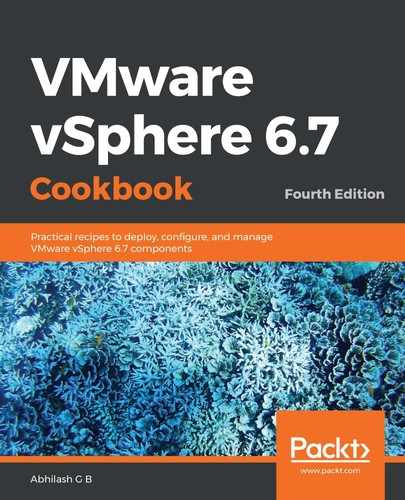Let's review some of the essential iSCSI concepts that would help you learn about how iSCSI works in a vSphere environment:
- iSCSI initiator: This is a software/hardware adapter that resides on an ESXi host and can connect to an iSCSI target. The software iSCSI adapter is built into the VMkernel and can be enabled when intended. The hardware iSCSI adapter can be of two types: dependent and independent. While the dependent iSCSI adapter handles the packet processing, it is still reliant on ESXi for its network configuration and management. The independent iSCSI adapter provides for both configuration and packet processing.
- iSCSI target: This is a network interface on the iSCSI array or simply a reference to a LUN. Some arrays, such as Dell EqualLogic and HP StoreVirtual, present each LUN as a target.
Starting with vSphere 6.5, the iSCSI initiator and the iSCSI target can now be on two different layer-2 subnets.
- iSCSI portal: This is a combination of the iSCSI target's IP address and the listening port (default: 3260). An iSCSI portal at the initiator is the IP address of the VMkernel interface and a random port number.
- iSCSI session: This is a TCP/IP session established between an iSCSI initiator and an iSCSI target. Each session can have one or more connections to the same target. In the case of a software iSCSI, a session is established between each bounded (port binding) VMkernel interface and an iSCSI target. For example, if there are two VMkernel interfaces bound to the iSCSI initiator, then the initiator will establish two separate sessions for each target it discovers.
- iSCSI connection: Each iSCSI session can have multiple connections to the iSCSI target portal. The following diagram illustrates a single iSCSI session with two connections:

- CHAP: This is used by iSCSI to make sure that the initiator and target establish a trusted and secure connection.
- Dynamic Discovery: This is the most commonly used target discovery mechanism, which comes in handy when the iSCSI server exposes a large number of LUNs/targets via its target portal.
- Static Discovery: Unlike the Dynamic Discovery mechanism, Static Discovery does not see every LUN/target exposed via the target portal. Instead, it only sees the specified targets.
- IQN: This is a unique identifier associated with each iSCSI initiator or iSCSI Target. The identifier starts with the string IQN followed by the year and month when the naming authority was established, the domain of the naming authority in reverse, and a unique name for the storage node. Each of these strings is separated by a period (.). The following diagram illustrates the iSCSI Qualified Name Format:

